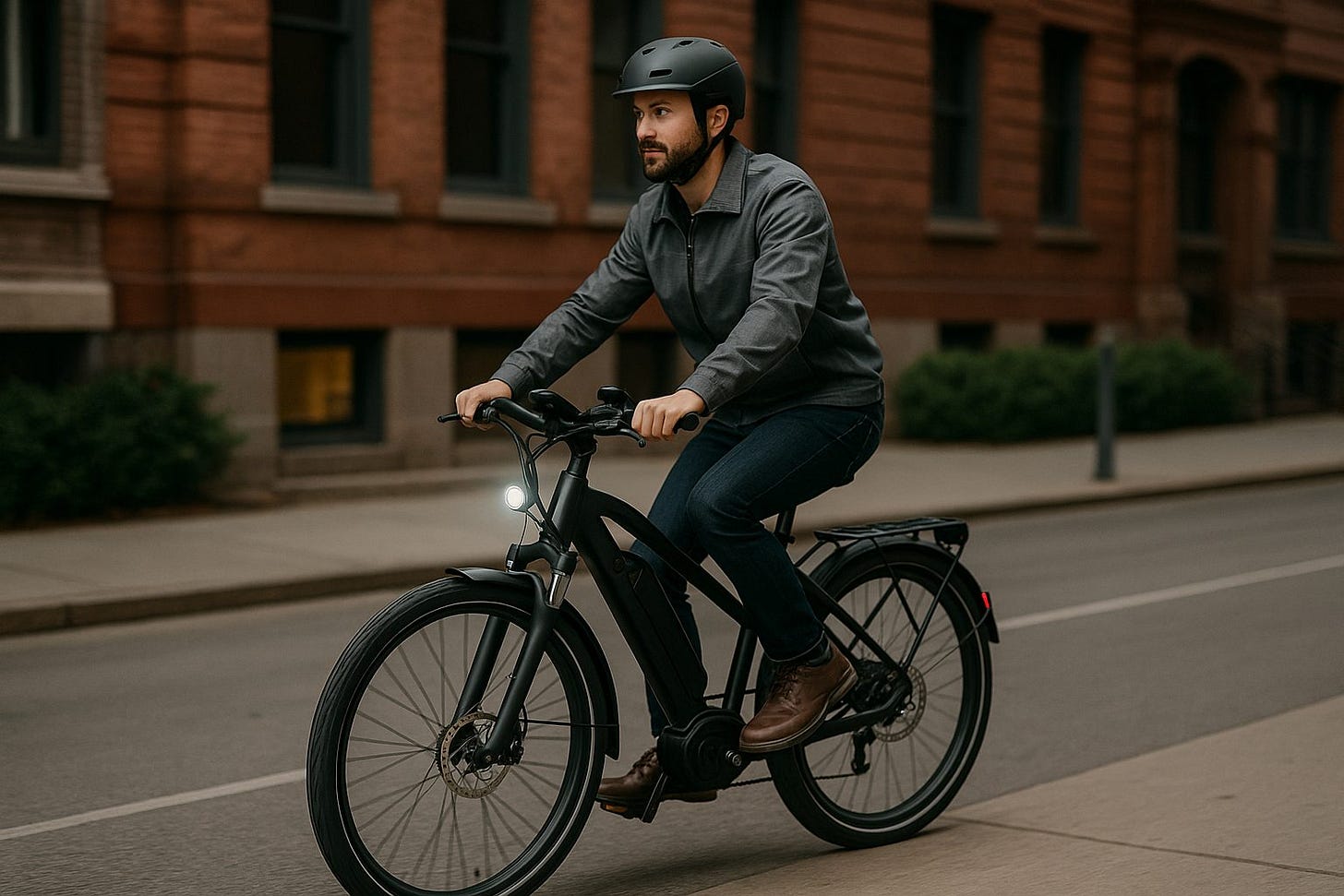6 Electric Bike Features That Make Commuting a Breeze
Ride Smart: The Electric Bike Features That Turn Stressful Traffic Into a Breeze
Picture this: you zip past idling cars, glide over potholes, reach your destination without breaking a sweat—and all this while saving money and helping the planet 🌿. Commuting by electric bike can make that dream real. But not all e-bikes are created equal. Some feel like hauling bricks; others like floating. The difference lies in features—the kind that matter every day, not just flashy specs for ads.
I'm here to pull back the curtain and show you six electric bike features that genuinely make commuting smoother, safer, and more effortless. I've dug into recent reviews, expert tests, and real-world feedback from 2025 to pull out what really works. By the end, you'll know what to look for when choosing or upgrading an e-bike so your daily ride feels like a joy ride.
1. Powerful, Responsive Motors & Smart Sensors
One of the fundamentals: the motor. Not just how many watts, but how it responds to you.
Mid-drive vs. hub motors: Mid-drives tend to deliver more natural-feeling assistance because they work through the bike's gears (helping especially on hills), while hub motors are simpler and cheaper. Experts repeatedly praise mid-drive setups for commuters who face varied terrain.
Torque sensors: These detect how hard you're pedaling and adjust assistance accordingly. The result? A ride that feels in tune with your effort. Less lag, more flow. Recent models like the Aventon Aventure.2 show how torque sensors can improve control and smoothness.
If your commute involves hills, stoplights, or frequent starts & stops, this is where the motor-sensor combo shines.
2. Long Range + Smart Battery Features
If your battery gives out mid-ride, it doesn't matter how cool the rest of the bike is. Range and battery usability are huge.
Battery Capacity & Watt-Hours (Wh): Bigger numbers = more mileage. Models in 2025 often offer 400-700 Wh for solid all-day commuting.
Removable / Locking Battery Packs: Being able to take out the battery to charge indoors (office, café, home) or lock it securely to deter theft adds huge practical value.
Smart power management: Apps, ride modes, regen braking in some cases—these let you optimize range and adjust based on conditions. Let the tech help.
Misjudge range and you'll be scrambling for a charger. Get it right, ride easy.
3. Safety & Control: Brakes, Tires, Lights
Commuting means unpredictable traffic, weather, road surfaces. These features keep you stable, visible, in control.
Hydraulic disc brakes: Wet pavement, downhill runs—these brakes outperform mechanical ones for stopping power. It's a frequent upgrade in mid-range 2025 models.
Good tires + suspension: Wider, grippy tires help on rough roads; suspension forks or seatposts smooth bumps without jarring your spine. Examples: Aventon Aventure.2 got upgraded tires and lights/fenders for comfort in imperfect city streets.
Integrated lights & visibility: Lights up front + rear, reflectors, even built-in turn signals make a difference. Some bikes include ambient lights or automatic lights that turn on with motion or when it gets dark.
You don't just want to ride fast. You want to ride safe.
4. Comfort & Ergonomics That Reduce Fatigue
If your ride sucks, you'll dread every commute. Good design makes it not just "survivable" but pleasant.
Frame geometry & adjustability: Upright riding positions, adjustable stems or handlebars, frame shapes that let you mount/dismount easily—this matters for joints, visibility, long rides.
Suspension where it counts: Not always heavy-duty full suspension, but a suspension seatpost or front fork can save your back on broken pavement.
Accessory-friendly setup: Racks, fenders, integrated mounts for phones or bags. Commuting often means hauling; you'll appreciate having places to carry things.
Because comfort isn't luxury—it's what keeps you riding every morning instead of ditching the bike for car or public transport.
5. Smart Connectivity & Anti-Theft Features
You want your bike to be an ally, not a liability. Smart features add a layer of peace of mind.
GPS / tracking / geofencing: If someone moves the bike (or it's stolen), you're not helpless. Bikes like the ones from Aventon Level 3 include GPS plus motion-sensor and alarm systems.
App integrations: Monitoring battery health, tweaking power modes, watching ride stats—these aren't just gimmicks. They help you use the bike more intelligently, prolong its life.
Digital locking or wheel locks: Physical locks are still essential—but built-in locks make things simpler. Some bikes allow motor disabling via app, which adds a theft deterrent.
Trust me: losing a bike is worse than carrying an extra pound of gear.
6. Legal Classification, Weight & Portability
A heavy, over-powered bike that can't go where you need (stairs, train, shared spaces) or one that runs afoul of laws is a headache.
E-bike classes: Know Class 1, 2, 3 in your region. Speed, throttle usage, assist restrictions vary. If you ride on bike paths or need to comply with local laws, classification matters.
Weight & folding or step-thru designs: Lighter bikes are easier to carry upstairs, load onto racks, or store. Step-thru frames help frequent mounting/dismounting. Folding designs add portability.
Payload capacity: If you carry bags, groceries, a laptop, maybe even a kid, you need racks and frame strength that can handle the load. Check what the bike is rated for.
You don't want to buy a bike that's outlawed on your path, too heavy to carry, or too weak to haul your stuff.
Also read: 6 Smart E-Bike Tips to Save You Money and the Planet
Conclusion & Call-to-Action
If you choose an e-bike that nails these six features—responsive motor & sensors, long & smart battery, safety components, comfort, connectivity, and practical legal & weight considerations—you'll already be in the top tier of commuter e-bikes. You'll glide into work happier, not dripping sweat, not worrying about theft, not dreading your ride home.


